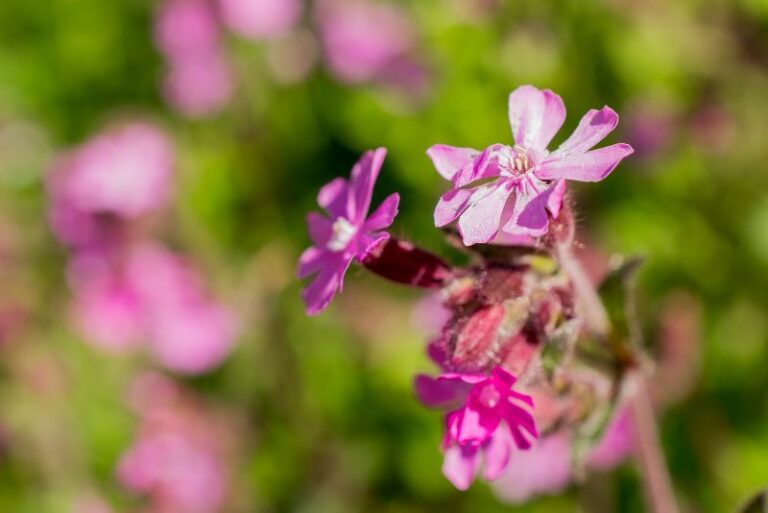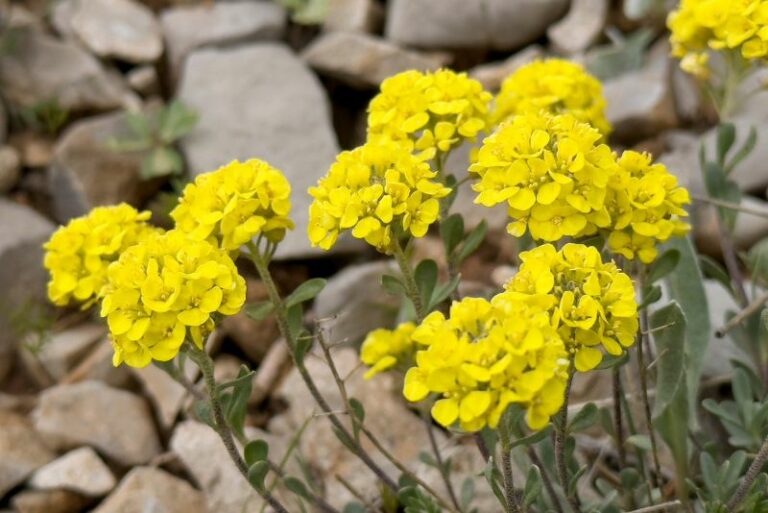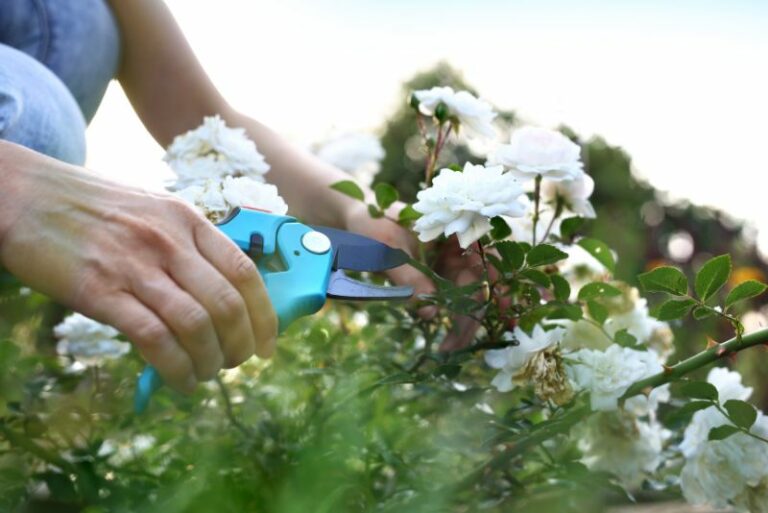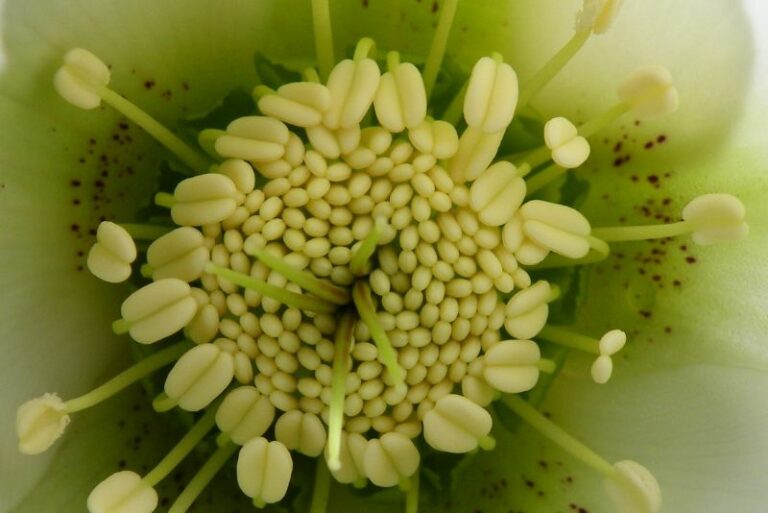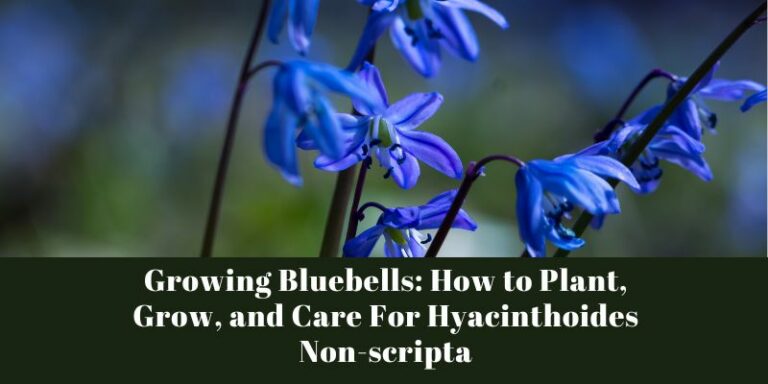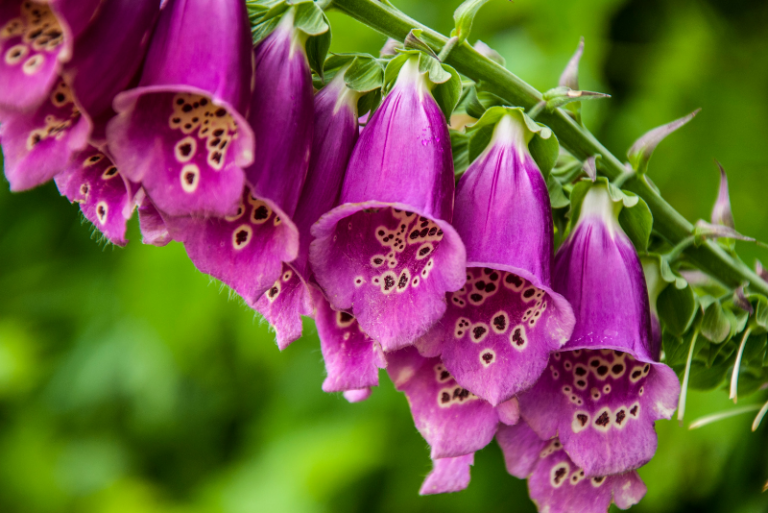How to Plant, Grow and Care for Joe Pye Weed
Welcome to the world of Joe Pye Weed, a stunning perennial plant that is sure to captivate and inspire all who encounter it. Whether you’re a seasoned gardener or a novice enthusiast, this blog post will serve as your ultimate guide on how to plant, grow, and care for this remarkable flower.
With its majestic height, vibrant blooms, and ability to thrive in a variety of conditions, Joe Pye Weed is not only a showstopper in any garden but also an important source of nectar for pollinators. Join us on this botanical journey as we delve into the rich history, fascinating characteristics, and practical tips for cultivating this native American beauty.
From its medicinal uses by indigenous tribes to its role in modern-day landscaping, we will explore it all, empowering you to create a thriving sanctuary for Joe Pye Weed in your own backyard. So, grab your gardening gloves, sharpen your pruners, and let’s dive into the wonderful world of Joe Pye Weed together.
Joe Pye Weed Overview
Here’s an overview table for Joe Pye Weed:
| Attribute | Description |
|---|---|
| Common Name(s) | Joe Pye Weed, Queen of the Meadow |
| Scientific Name | Eutrochium purpureum (formerly Eupatorium purpureum) |
| Family | Asteraceae |
| Height | Typically 4 to 7 feet (can vary based on the specific species) |
| Light | Full sun to partial shade |
| Water | Medium to wet, does not tolerate drought well |
| Soil | Prefers rich, moist soils, but can tolerate a range of soil conditions |
| Fertilizer | Generally does not require fertilizer; may benefit from a light application of a balanced fertilizer in poor soils |
| Pests and Diseases | Generally resistant to pests and diseases; can occasionally be affected by powdery mildew or rust |
Please note that there are different species within the genus Eutrochium, and some characteristics like height can vary among them. Always check the specific needs for the species you are interested in growing.
All About Joe Pye Weed
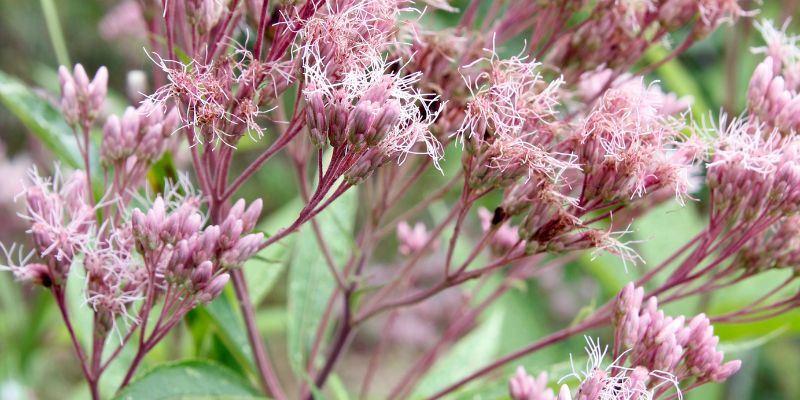
Joe Pye Weed, scientifically known as Eutrochium purpureum, is a perennial plant native to parts of North America. Named after a Native American healer, Joe Pye, this tall, majestic plant proudly showcases its dusty pink flowers in late summer and early fall.
The plant can grow over six feet tall in the right conditions, typically along stream banks and in moist, low-lying areas. Its large, serrated leaves form a whorled pattern around sturdy, purple-tinted stems. Joe Pye Weed is an excellent choice for naturalistic plantings, attracting bees, butterflies, and other beneficial insects with its sweet vanilla-scented blossoms.
In traditional medicine, Joe Pye Weed was used for various ailments. The Native Americans used it to treat kidney stones, urinary tract ailments, and fever. In modern herbal medicine, it is still used for its diuretic properties. However, it should be noted that medical use of Joe Pye Weed should always be under the supervision of a healthcare professional.
While it’s an attractive addition to any garden due to its height and unique blossoms, Joe Pye Weed is also a relatively easy plant to cultivate. It prefers full sun to partial shade and thrives in well-drained soil. Its tolerance for different soil types and moisture levels make it an adaptable choice for gardeners. Despite its tall stature, Joe Pye Weed doesn’t require staking, thanks to its strong stems.
Regular watering is essential for the growth of Joe Pye Weed, especially during dry spells. However, mature plants have some drought resistance. To encourage a bushier growth and more blooms, the tops of the plants can be pinched back in early summer.
Overall, Joe Pye Weed is a magnificent plant, both for its visual appeal and its historic and continued medicinal uses. Its hardy nature and ability to attract pollinators make it a valuable addition to any garden.
Varieties of Joe Pye Weed
Joe Pye Weed includes several varieties that offer unique characteristics. These varieties not only share the robust nature and medicinal uses of the species but also lend an extraordinary charm to gardens.
- Sweet Joe Pye Weed (Eutrochium purpureum): Hailing from the East Coast of North America, its height can reach up to 9 feet. Its ornamental value lies in its vanilla-scented, mauve-pink flowers that attract butterflies. This variety is distinguished by its whorled, lance-shaped leaves and purple stems.
- Spotted Joe Pye Weed (Eutrochium maculatum): This variety is renowned for its height, reaching up to 10 feet. The main visual difference from its counterparts lies in its hollow, purple-spotted stems. Its flowers are slightly more mauve and have a mild, sweet scent.
- Coastal Plain Joe Pye Weed (Eutrochium dubium): A shorter species, generally growing to heights of 3-5 feet, it is perfect for smaller gardens. Its flowers are pale pink to nearly white and emit a light, sweet scent. It originates from the coastal regions of Eastern North America, thus explaining its name.
- Hollow Joe Pye Weed (Eutrochium fistulosum): This variety stands out with its hollow, purple-spotted stems and can reach a height of 12 feet under favorable conditions. Its flowers are rose-pink and emit a sweet aroma.
Despite the differences in height, stem characteristics, and flower color, all varieties share certain similarities. They thrive in full sun to partial shade, prefer well-drained soil, and are drought-resistant once mature. All varieties also attract pollinators, making them an excellent addition to any garden that aims to support local ecosystems.
Joe Pye Weed Care Procedures

Tall, robust, and beautiful, Joe Pye Weed is an excellent choice for gardeners who want to add some height and color to their landscape. Here are some care procedures to help you cultivate this plant successfully:
Light and Temperature
Joe Pye Weed enjoys a good balance of light and shade to grow at its best. It thrives in full sun to partial shade, which means it needs at least six hours of direct sunlight each day. However, it can also tolerate some afternoon shade in hot, sunny climates to avoid scorching its leaves. If you’re growing Joe Pye Weed in a particularly sunny area, make sure it gets plenty of water to compensate for the increased evaporation.
As for temperature, Joe Pye Weed is a hardy plant that can withstand a broad range of conditions. It is comfortable in USDA hardiness zones 3 through 9, which includes minimum winter temperatures from -40 to 20 degrees Fahrenheit. Despite its toughness, Joe Pye Weed does appreciate a mild to warm climate for optimum growth and blooming. If the temperatures drop too low or extreme weather conditions are expected, it’s advisable to protect the plant with garden fleece or relocate potted plants to a sheltered location.
Water and Humidity
Joe Pye Weed is a fairly adaptable plant when it comes to water and humidity requirements. Its natural habitat is in marshy or wetland areas, so it is comfortable in a moist environment. However, it can also tolerate periods of dryness once established.
When it comes to watering, the soil should never be allowed to completely dry out. During the growing seasons of spring and summer, water the plant deeply once a week or more frequently during hot, dry periods. It’s best to water in the morning to reduce evaporation and to help prevent fungal diseases that can arise from overnight dampness.
In the winter months, watering can be reduced, but the soil should still remain somewhat moist. The plant’s need for water reduces considerably during its dormant period.
As for humidity, Joe Pye Weed is quite flexible. It can thrive in both high humidity and relatively dry conditions. If you live in a dry climate, occasional misting can help replicate its natural wetland environment.
Care should be taken not to overwater Joe Pye Weed though. While it enjoys a good amount of moisture, soggy soil can lead to root rot, a serious condition that can kill the plant. Always ensure that the soil is well-draining.
In conclusion, regular, deep watering and a moist environment are key to cultivating a healthy Joe Pye Weed. With the right balance of watering and humidity, this plant can flourish and offer its beautiful blossoms each season.
Soil and pH Requirements and Preparation for Joe Pye Weed
Joe Pye Weed is a resilient plant largely accommodating a variety of soil types, but it prospers particularly well in a specific range of conditions. Understanding these requirements can help you create the ideal growing environment for this plant.
Soil Types
Joe Pye Weed prefers a moist, well-draining soil. It can grow in several soil types including clay, loam, or sandy soil. Despite its tolerance for different soil structures, the plant does best in rich, loamy soil which provides a balance of drainage and moisture retention.
Soil pH
The ideal pH for Joe Pye Weed ranges from 6.0 to 8.0, making it adaptable to both slightly acidic and slightly alkaline conditions. Regular soil testing can help maintain the optimal pH level. If the soil is too acidic, applying lime can help increase the pH, while elements like sulfur or peat moss can lower the pH if it’s overly alkaline.
Soil Preparation
Before planting Joe Pye Weed, prepare the soil to ensure the best conditions for growth. Start by removing any weeds or stones from the planting area. If the soil is heavy clay or sand, improve its structure by adding organic matter like compost or well-rotted manure. This will enhance the soil’s nutrient content, improve its water-holding capacity, and support healthy root development.
To adjust the soil pH, use a soil test kit to determine the current pH level. Depending on the result, add lime to raise the pH or sulfur to lower it.
After making any necessary amendments, till the soil to a depth of 12-15 inches to loosen it and improve its structure. Finally, water the prepared soil thoroughly before planting your Joe Pye Weed.
In conclusion, despite Joe Pye Weed’s adaptability to various conditions, providing the optimal type of soil, maintaining the ideal pH level, and properly preparing the soil will ensure the robust growth and blooming of this plant.
Fertilizing Joe Pye Weed
Though Joe Pye Weed is a low-maintenance plant that can thrive in less nutrient-rich soil, providing additional nutrients through fertilizing can help it achieve its full potential and provide an impressive display of flowers. Below are the steps to guide you through the process of fertilizing your Joe Pye Weed.
Choosing the Right Fertilizer
Joe Pye Weed benefits from a balanced fertilizer, which is equally rich in Nitrogen, Phosphorus, and Potassium (marked as N-P-K on fertilizer packages). A slow-release granular fertilizer with an N-P-K ratio of 10-10-10 or 14-14-14 is a good option. However, the plant is also tolerant of organic fertilizers such as compost or well-rotted manure.
Timing of Fertilization
The best time to fertilize Joe Pye Weed is early in the spring, just as new growth begins to appear. A second application in early summer can help support vigorous growth and abundant flowering.
Applying the Fertilizer
To apply the fertilizer, spread it evenly around the base of the plant, avoiding direct contact with the stems to prevent burning. The amount of fertilizer used should be in accordance with the instructions on the package. Once applied, lightly rake the fertilizer into the top layer of soil and then water thoroughly to help the nutrients permeate the soil.
Monitoring and Adjusting Fertilization
Keep an eye on your Joe Pye Weed after fertilizing. Healthy growth and abundant blossoms are signs that your fertilization routine is working well. If the plant appears stunted or the leaves are discolored, this could indicate a nutrient deficiency, signaling that an additional round of fertilization might be necessary.
In conclusion, while Joe Pye Weed does not require heavy feeding, a proper fertilization routine can support its growth and flowering. Remember that less is more when it comes to fertilizing, and monitor your plant’s response to find the right balance.
Repotting Joe Pye Weed
Repotting is a crucial part of Joe Pye Weed care, especially if you’re growing them in containers. This process not only provides the plant with fresh soil but also mitigates potential overcrowding issues. Here are the steps to effectively repot your Joe Pye Weed.
Choosing the Right Time
The ideal time for repotting Joe Pye Weed is in the early spring, just as the plant is beginning to show signs of new growth. Repotting at this time gives the plant a chance to establish itself in the new pot before the vigorous growth period of summer.
Selecting a Suitable Pot
When selecting a new pot, make sure it’s only one or two sizes larger than the current one. The pot must have sufficient drainage holes to prevent waterlogging. Ceramic or terracotta pots are suitable choices as they allow the soil to breathe and help prevent overwatering.
Preparing the New Pot
Before repotting, prepare the new pot by cleaning it thoroughly to remove any residues or pests. Then, add a layer of fresh, well-draining potting mix at the bottom. The soil should be rich in organic matter for nutrient supply and have a pH range of 6.0 to 8.0, suitable for Joe Pye Weed.
Removing the Plant from its Current Pot
Carefully remove Joe Pye Weed from its current pot. Tap the sides of the pot to loosen the soil and gently pull the plant by holding its base. Try to keep as much of the root ball intact as possible.
Transplanting and Backfilling
Place the plant in the new pot, ensuring it’s at the same depth it was in the previous pot. Fill around the plant with the potting mix, pressing gently to ensure there are no air pockets.
Aftercare
After repotting, water the plant thoroughly and place it in a shaded area for a few days to recover from any transplant shock. After this period, move it back to its usual location and continue your regular care routine, paying particular attention to watering and feeding.
In conclusion, repotting is a key aspect of Joe Pye Weed care that can significantly improve the health and vigor of your plant. With careful timing and the right materials, you can ensure a successful transplanting process.
Propagating Joe Pye Weed
Propagation is the process of creating new plants from an existing one. For Joe Pye Weed, this can be achieved through dividing, cuttings, or from seeds. Each method has its particularities, and the following sections will guide you through each of them.
Propagating Joe Pye Weed Through Division
Division is a straightforward propagation method ideal for mature Joe Pye Weed plants. This approach should be carried out in the early spring or fall when the plant is not in its active growth phase. Here is a step-by-step guide:
- Dig Up the Plant: Carefully dig around the plant, preserving as much of the root system as possible.
- Divide the Plant: Using a sharp, clean knife, divide the plant into sections. Each section should have a healthy portion of roots and several shoots.
- Plant the Divisions: Plant each division as you would a new plant, ensuring they are watered thoroughly and placed in a location that mimics their original growing conditions.
Propagating Joe Pye Weed From Cuttings
Propagating Joe Pye Weed from cuttings is another effective method, best performed in late spring or early summer. Here’s how:
- Prepare the Cutting: Select a healthy, vigorous stem and cut a 4-6 inch section, preferably with a few leaves attached. Make sure to use a sharp, sterilized cutting tool.
- Prepare the Potting Mix: Fill a small pot with a well-draining potting mix, such as a 50/50 mix of perlite and peat moss.
- Plant the Cutting: Insert the cut end of the stem into the potting mix, ensuring the leaf nodes are buried.
- Care for the Cutting: Place the pot in a bright, indirect light location and keep the soil consistently moist. In a few weeks, the cutting should develop roots and can be transplanted into a larger pot or the garden.
Propagating Joe Pye Weed From Seeds
Propagation from seeds is the most time-consuming method but can be rewarding. Follow these steps:
- Sow the Seeds: In late winter or early spring, sow the seeds shallowly in a tray filled with a well-draining potting mix.
- Provide Care: Place the tray in a warm, bright location and keep the soil moist but not waterlogged.
- Transplant Seedlings: Once the seedlings have developed their second set of true leaves, they can be carefully transplanted into individual pots. Continue to care for them until they are strong enough to be moved into their permanent location.
In conclusion, propagation is a great way to increase the number of Joe Pye Weed plants in your garden. Whether by division, cuttings, or seeds, each method offers its own set of benefits and challenges. Choose the one that best suits your comfort level and timetable.
Pruning Joe Pye Weed
Pruning is an integral part of Joe Pye Weed maintenance. It helps shape the plants, encourages new growth, and aids in weed control and disease prevention. Here’s a step-by-step guide on how to prune your Joe Pye Weed effectively.
Deciding When to Prune
The best time to prune Joe Pye Weed is in late winter or early spring, just before new growth starts. At this time, the plant is dormant, and pruning won’t interfere with flower production.
Choosing the Right Tools
For pruning Joe Pye Weed, you will need a pair of sharp pruning shears. Ensure your shears are clean and sharp to make clean cuts and minimize damage to the plant.
Identifying What to Prune
Start by removing any dead, diseased, or damaged stems from the base of the plant. This helps to redirect energy towards healthy growth and prevents the spread of disease.
Shaping the Plant
After removing unhealthy stems, move on to shaping the plant. Cut back overgrown stems to maintain the plant’s size and encourage bushier growth. Remember, it is best not to remove more than one-third of the plant’s overall growth in a single pruning session.
Pruning for Flowering
If your goal is to promote flower production, consider deadheading the plant during the blooming period. Deadheading, or removing spent flowers, encourages the plant to produce more blooms instead of setting seeds.
Cleaning Up
After pruning, clean up any debris from around the plant. Leaving debris can attract pests and diseases. Dispose of it appropriately, preferably via composting, if it’s free of disease.
Aftercare
After pruning, water the plant well and consider applying a balanced fertilizer to support new growth.
In conclusion, pruning is an essential care procedure that can greatly benefit your Joe Pye Weed. By following these steps, you can maintain a healthy, vibrant, and well-shaped plant that will reward you with abundant growth and flowering.
Troubleshooting Joe Pye Weed
Troubleshooting your Joe Pye Weed involves identifying and rectifying any problems that might impede the plant’s growth and overall health. This section will guide you through common growing problems, pests, and diseases associated with Joe Pye Weed, providing solutions to ensure your plant thrives.
Growing Problems
Joe Pye Weed is generally hardy and easy to grow, but certain issues may arise. One common problem is lack of vigorous growth or failure to bloom, which might be due to insufficient sunlight. Ensure your plant is positioned to receive full sun to partial shade. Poorly draining soil can also lead to root rot. To prevent this, make sure your plant is in a location with well-draining soil or amend your soil with organic matter to improve its drainage properties.
Pests
While Joe Pye Weed is relatively pest-resistant, it might occasionally attract aphids or whiteflies, which feed on the sap of the plant. A strong jet of water can dislodge these pests, or you can use an organic insecticidal soap as a more robust solution. Always ensure to spray under the leaves where pests tend to hide.
Diseases
Joe Pye Weed is susceptible to powdery mildew, a fungal disease that appears as a white powdery substance on the leaves. To treat powdery mildew, remove and dispose of any affected leaves and apply a fungicide if necessary. Overcrowding plants can create a humid environment that encourages this disease, so ensure adequate spacing between your Joe Pye Weed and other plants. Rust is another potential disease, identified by orange or brown pustules on leaves. Like powdery mildew, it can be controlled through pruning affected areas and applying a fungicide.
In conclusion, while Joe Pye Weed is generally low-maintenance, being aware of potential problems will help you respond promptly and effectively, ensuring your plant remains healthy and vibrant.
Frequently Asked Questions about Joe Pye Weed
1. What type of soil is best for Joe Pye Weed?
Joe Pye Weed prefers well-drained soil, enriched with organic matter. It tolerates both clay and sandy soils, as long as they are well-draining.
2. How much sun does Joe Pye Weed need?
Joe Pye Weed thrives best in full sun to partial shade. Lack of adequate sunlight can lead to less vigorous growth and reduced flowering.
3. How often should I water Joe Pye Weed?
Water Joe Pye Weed regularly to keep the soil consistently moist, especially during dry spells. However, avoid waterlogging as it can lead to root rot.
4. Why is my Joe Pye Weed not flowering?
Insufficient sunlight, poor soil conditions, or lack of adequate water can contribute to Joe Pye Weed failing to bloom. Ensure these conditions are met for successful flowering.
5. How do I propagate Joe Pye Weed?
Joe Pye Weed can be propagated by division, cuttings, or seeds. Each method has its own set of benefits and challenges.

